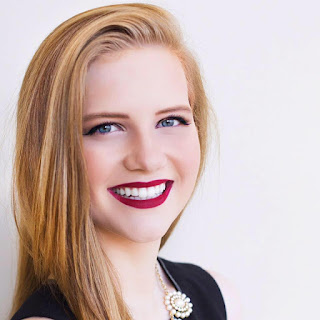Vocal Music
- Sing Unto God from Judas Maccabeus – George Frideric Handel (1685-1759)
- Laudate Dominum from Vesperae Solennes de Confessore – Wolfgang Amadeus Mozart (1756-1791)
- Brooke Vance, soprano
Instrumental Music
- Tuba Tune – Norman Cocker (1889-1957)
- Festival Toccata - Percy Fletcher (1879-1932)
Congregational Music (all hymns from the Hymnal 1982 with the exception of those marked “R” which are from Renew.)
- Hymn 207 - Jesus Christ is risen today (Easter Hymn)
- Hymn 417 - This is the feast of victory (Festival Canticle))
- Hymn 210 - The day of resurrection (Ellacombe)
- Hymn 174 - At the Lamb’s high feast we sing (Salzburg)
- Hymn 204 - Now the green blade riseth (Noel Nouvelet)
- Hymn 179 - “Welcome, happy morning!” (Fortunatus)
- Psalm 118:1-2, 14-24 -Tone VIIIa, refrain by Hal Hopson
In what may be a first, none of the choral or organ music for the big Easter services was written expressly for the season of Easter. In fact, there is not even an "alleluia" in the whole lot! But rest assured, the resurrection will be celebrated! All of the music is joyous and jubilant!
Many choirs across the globe will include one or more selections from Handel's oratorio, Messiah, in the Easter services, but we turn to another of his oratorios, Judas Maccabaeus, for our offertory. The story of a people’s triumph told in music of high drama and glorious pageantry is George Frideric Handel at his heroic best, full of rousing choruses, ravishing duets, and fiery arias.
Written by Reverend Thomas Morell (based on the apocryphal book 1 Maccabees), the libretto of Judas Maccabaeus tells the tale of the Jews’ resistance toward their Syrian conquerors. Led by their king, Antiochus, the Syrians invaded Judea in 169 BC, killing many people and desecrating the Jewish temples. The Jews did not submit willingly to their captors, and under the leadership of Judas Maccabeus, fought their tormentors. Our anthem comes from the moment that the Jew's learn that Judas has not only defeated scores of enemies, but has moved into Jerusalem as well. That's why the people of Israel "sing unto God, ...to crown this conquest with unmeasur’d praise." It's a perfect response also to Jesus' conquest over death and hell.
You'll hear many typical Handelian elements, starting with the opening theme in the altos which breaks into a joyous, melismatic run on the words "praise." There is also a juxtaposition of contrapuntal, fugal sections mixed with clear cut homophonic sections where each part sings the same words at the same time, emphasizing the words.
 |
| Brooke Vance, solist for the Mozart this Sunday. Brooke grew up at Good Shepherd, singing in the choirs until she entered Indiana University where she received her undergraduate degree in music in 2017 |
During communion, we are so happy (and fortunate) to have Brooke Vance with us to sing the exquisite Laudate Dominum from Vesperae Solennes de Confessore by Wolfgang Amadeus Mozart.
Mozart composed two settings of the Vespers (Evening Service): Vesperae Solennes de Dominica, K. 321 (1779) and Vesperae Solennes de Confessore, K. 339 (1780). The title Vesperae Solennes de Confessore means that the work was composed to honor a saint. Solennes in this case means accompanied by an orchestra.
The Vesperae Solennes de Confessore was the last work Mozart wrote for his taskmaster employer, Archbishop Colloredo. This service stays well under the 45-minute time limit created by the Archbishop, composed of five Psalms, followed by a canticle, the Magnificat. The Psalms flow easily from one to the other, as chant would do in such a service.
For this movement, he creates one of the most lyrical and beautiful soprano solos in all of his
compositions. It is a gentle hymn of praise, with soaring, expressive melody for the soloist,
accompanied by liquid, flowing instrumental lines. The choir enters quietly at the Gloria patri, singing the same music that the soloist sang at the beginning of the movement while textually continuing the text. The soloist enters with exquisite embellishment at the Amen. The chorus states a final, quiet Amen, and the movement concludes with a gentle, rippling effect in the accompaniment.
The organ music comes from the early-twentieth century English school, with works by Norman Cocker and Percy Fletcher. Of the two, Cocker was more at home in the church, with Fletcher at home in the theatre.
Cocker was a chorister at Magdalen College, Oxford, before later becoming organist of Manchester Cathedral. He was awarded the Organ Scholarship at Merton College, Oxford, but never completed his degree after being sent down, on his own admission, for not doing enough work. He also held appointments in various cinemas in the city. He is chiefly known for this one work, Tuba Tune, which he wrote in 1922.
Fletcher, who was born in Derby, made his living as a Musical Director in the London theatre world, fulfilling this position successively at the Prince of Wales, Savoy, Daly's, Drury Lane and from, 1915 until his death, His Majesty's Theatre. He also composed two successful musical comedies, Cairo, described as a 'mosaic in music and mime' in 1921, The Good Old Days in 1925.
He also wrote a good deal of classical music for orchestra, chamber ensembles, brass bands, and church, but sadly Fletcher's music has now all but sunk without trace. One may still occasionally hear Bal Masqué played by a light orchestra, Labour and Love and the Epic Symphony performed by brass bands, or the rare church choir sing the Passion at Easter. Ultimately it is the organ where you now regularly hear his works, including today's closing voluntary, Festival Toccata, written in 1915.







